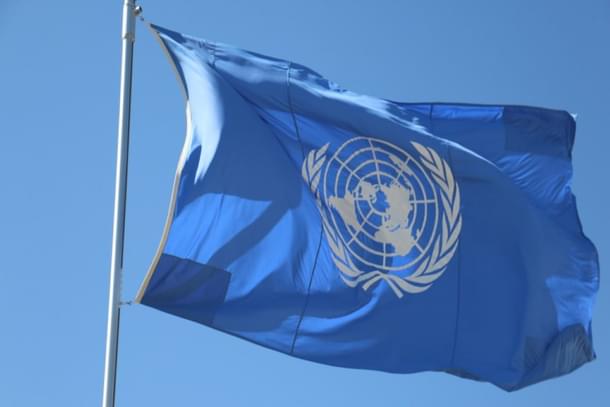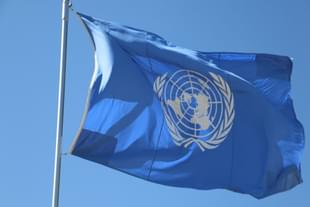World
COP27 Must Focus On Bridging The Gap Between Finance Mobilisation And Climate Actions
Labanya Prakash Jena And Meera Siva
Nov 04, 2022, 04:24 PM | Updated 04:23 PM IST
Save & read from anywhere!
Bookmark stories for easy access on any device or the Swarajya app.


Global warming is accelerating but finance is not doing its part to stop it.
As we get ready for the next United Nations (UN) Summit on Climate Action — Conference of the Parties (COP) 27, it helps to reflect on last year’s summit — what has changed during the year and what are the areas where urgent action is needed.
Finance Issues Loom Large
The recent Intergovernmental Panel on Climate Change (IPCC) report suggests that there is a huge gap between climate finance mobilisation and needs, more so in developing countries and least developed countries (LDCs).
The scale of climate investment requirements in developing countries are 4 per cent to 9 per cent of their gross domestic product (GDP) annually, versus one-half in developed countries.
Unsurprisingly, financial support to developing countries and LDCs to take climate action remained one of the most contentious subjects in international climate negotiation.
At the COP6, it was noted that the $100 billion committed per year by developed countries to support developing nations is delayed. This leads to loss of trust as nations do not walk the talk.
Developing countries want the developed ones to cover all the commitment shortfalls in the next five years. Given how costs are increasing to deal with issues, they also expect that climate finance commitment of $100 billion per year be increased significantly.
Expectations On Swift Disbursal
Not just that, it is imperative that the funding must be disbursed quickly.
The existing disbursal procedure is not helping vulnerable countries, given the institutional capacity constraint to develop projects to meet the criteria of Multilateral Development Banks (MDBs) and Multilateral Climate Funds (MCFs).
As a result, it takes years to get the actual funding. It will be helpful to make the access easy by simplifying the process of approval.
The other bones of contention on climate finance issues include the separation of development finance and climate finance, exclusion of private finance from climate finance support, and substantial (at least 50 per cent) of capital flows for climate adaptation.
Need Commitment On Loss And Damage Financing
The impact of climate-change-induced events is a reality, as evidenced by the floods in Pakistan and India. But developing countries and LDCs have not prepared themselves for climate adaption.
Loss and Damage Financial Facility (LDFF) financing can provide much-needed additional financing support, under Article 9 of the Paris Agreement.
This facility can help affected countries to recover from climate-induced disasters quickly and continue their efforts on climate change.
LDFF was proposed at COP26, but agreements were not secured. It is expected to be defined at COP27 with clear milestones and outcomes.
It is expected that “Global Shield against Climate Risks”, worked on by Germany and accepted by G7, will be taken up in COP27.
The shield gathers activities in the field of climate risk finance and preparedness together under one roof to provide protection solutions that can be implemented swiftly.
The process will be linked to the contingency plans of developing countries, enabling people and authorities to access the assistance needed urgently. Furthermore, the shield will mobilise additional funds in order to meet the growing demand for finance.
Support Must Reflect Current Economic Context
Another important shift that is needed is to rethink the over reliance on market solutions. Developed countries’ climate finance support is mostly through MDBs or MCFs.
These financial entities place onerous conditionalities and their love for market-based financial instruments is challenging now, on the back drop of Covid-19 pandemic and rising energy prices due to the Russia-Ukraine war.
Several countries decreased their climate budgets or delayed climate projects and diverted funds to respond to immediate social challenges such as health costs, food security, and rising inflation.
The global events in the last few years have exacerbated debt issues and ballooned fiscal deficits for many economies. This precarious situation warrants considering moving away from debt capital to alternatives such as grant-based finance.
Low-income and vulnerable-income countries must be provided grants to meet their minimum climate adaptive and development needs to generate higher social returns.
Several climate-related projects are not commercially viable, as there is uncertainty around revenue and profit. Grants can be used as subsidies to address this gap.
More Equity, Less Debt
Alternatively, international public capital providers such as MDBs and MCFs can provide patient risk capital in the form of equity to bridge the long time it takes to attract private capital.
Often external financers are reluctant to fund in the early stages, as promoters or corporates do not have sufficient equity capital. International climate finance providers can provide early-stage equity capital at a concessional rate that allows the project developers to raise external capital.
A small amount of equity investment can help leverage a large amount of debt capital. Investments by MDBs and MCFs as cornerstone investors can also attract other private investors.
The risk may not be commensurate with the return, but it must be assessed against the need to meet the climate mandate of these institutions.





